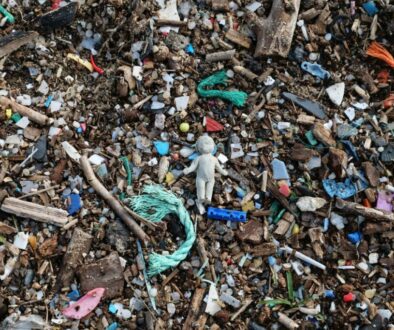The Dish Ran Away With The Spoon

Picture by Aritha on Pixabay
Article by Helen Lovell-Wayne
https://www.instagram.com/agreenerftr/
This paper was written with the sole intention of informing consumers about the products they may currently be buying. Hopefully with enough demand from consumers industries will supply safer and more sustainable products.
Dishwashers are convenient machines that save time. However, they also utilize chemicals that are destroying both our bodies and the natural environment. There are green alternatives that should be considered as viable alternatives to their chemical counterparts.
Companies that produce dishwashing liquid are not required by law to reveal the full composition of chemicals they use. (A.I. Abdurazakova 2023). These unknown chemicals are responsible for a number of diseases. Statistically speaking 70% of emerging allergic, oncological, and other diseases are a result of using dishwasher detergents (A.I. Abdurazakova 2023).
🤒Dishwashing Detergent Can Cause Health Problems👃
Surfactants are chemical compounds that reduce surface tension when added water. They are an integral part of dishwashing liquid. However those found in dishwashing detergents tend to accumulate on surfaces or interfaces. So humans that eat off the plates washed with these products are likely eating chemical compounds along with their food (Nathie Chahine and W. Chalhoub 2022). Studies on zebra fish have shown that detergents cause oxidative stress even at low levels (Nathie Chahine and W. Chalhoub 2022). Oxidative stress is the imbalance of harmful free radicals in your body to helpful antioxidants. This can result in damage to your organs and tissues.
It is not just the chemicals in dishwashing detergent that can harm living things. The fragrances contained in the detergent are volatile. They can damage the respiratory tract in people and/or cause disease. (A.I. Abdurazakova 2023). Additionally, when these chemicals including those added for appealing fragrance, enter the wastewater stream they can cause algal blooms and deplete the water of oxygen. Which can result in the death of both aquatic plants and animals (A.I. Abdurazakova 2023). To read more about water contamination see A Tale Of Two Papers.
🌽 Consumers Are Buying More Green Dishwashing Products🥜
Fortunately, consumers are starting to accept and embrace green dishwashing products. Green dishwashing leaning products have an annual growth rate of 4.5 % (Charles Bronzo et al. 2021). Green dishwashing liquids are made from surfactants chemically synthesized from raw materials. These are called green surfactants (Charles Bronzo et al. 2021).
Specifically green surfactants are derived from vegetable oils and animal fat (Charles Bronzo et al. 2021). They are not only better for the environment they are more efficient at reducing surface tension. Additionally they are more tolerant of the high temperatures and variable Ph conditions found in dishwashers. Green detergents are more efficient at removing food particles then their chemically derived counterparts. (Charles Bronzo et al. 2021)).
🍋Make Your Own Dishwashing Detergent🧂
The biggest obstacle to widespread use of green surfactants is the cost. The production of these liquids takes longer and incurs high energy and maintenance costs. ((Charles Bronzo et al. 2021)). Luckily there is a way for people to make their own detergent.
Green tea mixed with coconut oil is effective and easy way to create a homemade detergent (Sarvin Kanth and R. Kanth 2020). Additionally, the following recipe is taught in Indonesia as a way to make dishwashing liquid from cooking oil. The teachers of this recipe are both volunteers and engineering students. Mix used cooking oil and potassium hydroxide at 140-158 degrees Fahrenheit for one hour. Then agitate every 15 minute for 2-3 hours until it becomes solidified and transparent. Then dissolve in warm water and add a little lemon juice for an appealing scent (Evelyn Evelyn et al. 2018). Any combination of vinegar, water, lemon juice, kosher salt and washing soda could work as well.
💧 Use Your Dishwasher Responsibly 🫧
Dishwashers are convenient and essential for modern day life. However, they cause disease and are hurting the environment. Simply changing the detergent we use or creating our own, can make your household and the planet healthier.
For Further Reference
A. Abdurazakova (2023). The Harm Of Dishwashing Detergents And Its Prevention. Fergana Medical Institute of Public Health Department of Medical and Biological Chemistry. 212-214
C.Chahine et al. (2022). Effects of Dishwashing Detergents Residues on Redox Status And Cell Proliferation In Mice Liver And Kidney. International Journal of Research in Medical Sciences. 10(8):1606-1614;
E. Evelyn et al. (2019). Community Training In Dishwashing-Liquid Soap Making From Waste Cooking Oil. Journal of Empowerment. 1(2) 67-74.
C. Farias et al. (2021). Production of Green Surfactants: Market prospects. Electronic Journal of Biotechnology. (51) 28-39.
Kanth S., Selvam S., and Saravanan P. (2020). Eco-Friedly Green Tea Waste Dishwash. 9th International Innovation Invention and Design Competition. 306-309



